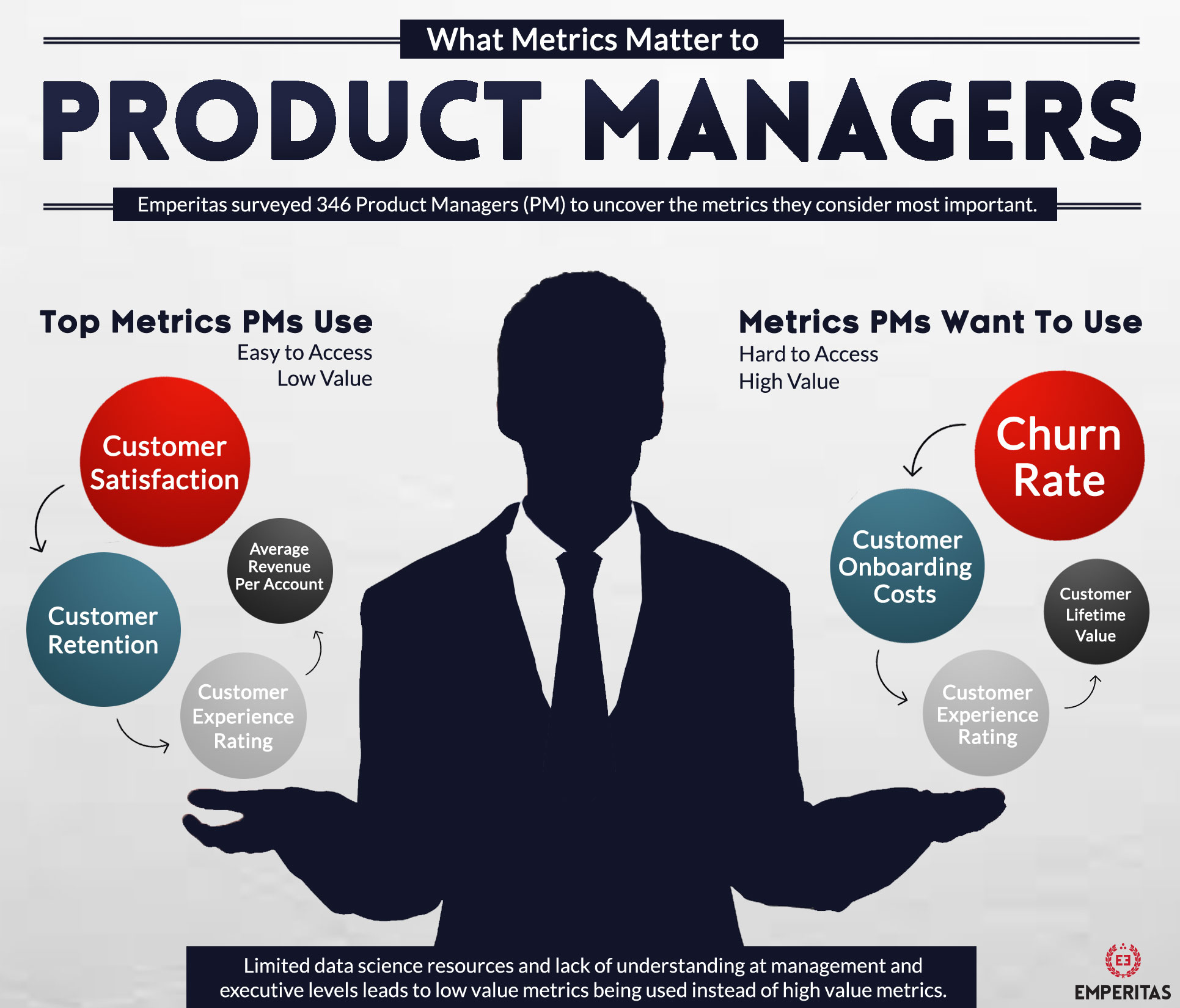Product managers (PM’s) are in a unique position within any organization. They tend to focus on providing immediate, tangible, value to their customers by using data to drive their product vision. Since we already know PM’s are hungry to learn, Emperitas spoke with 346 Product Managers about their top metrics for product development and what metrics they’d like to use (but currently don’t).
Metrics They Use
Product Managers really care about what their customers think so it shouldn’t be a surprise that Customer Satisfaction was the top metric used. Customer Satisfaction is an umbrella that includes reviews, comments, and other feedback that provide direction to feature development on a product. PM’s also showed a huge appreciation for Customer Retention metrics that help them understand why customers maintain their relationship with the company. The next metric that PM’s found useful was Customer Experience Rating which surveys users and asks them how they would rate their experience overall (once again providing direction for the product roadmap). Finishing the top four metrics used by PM’s was Average Revenue Per Account. This metric can help establish which products are high revenue and which are low revenue, while also helping establish average customer value.
Metrics They Would Like To Use
Metrics that Product Managers would like to use share a common theme, revolving around the Customer Journey (or the entire lifecycle of a customer relationship). Churn rate is the top metric that PM’s would like to use but aren’t. Churn rate is a high-value metric that helps companies understand why and at what rate customers are choosing to end their relationship with a product. PM’s also wanted to understand their Customer Onboarding Costs as they help understand the process the users go through when they start their journey. Customer Experience Rating and Customer Lifetime Value closed out the top four metrics PM’s would like to use. Customer Lifetime Value is another high-value metric that helps understand the total value of a customer relationship from start to end.
Why They Used One Metric And Not The Other
Product Managers, like many of us, are under some significant time constraints so they resoundingly chose to use metrics that are easy to access. However, using these low insight metrics are leading to an underperformance in the execution of the product vision, because the analysis isn’t as insightful as it could be with other metrics. In addition, Product Managers don’t often find support from executives while trying to get access to higher-value metrics. Yet the value of a metric should outweigh any time saved, because with the right process you can still get to quick wins that have more impact since they’re based on metrics that matter, not that are easy to access.
Want to get ahead of the competition? Read our post on “Becoming A Data-Driven Product Manager”.



